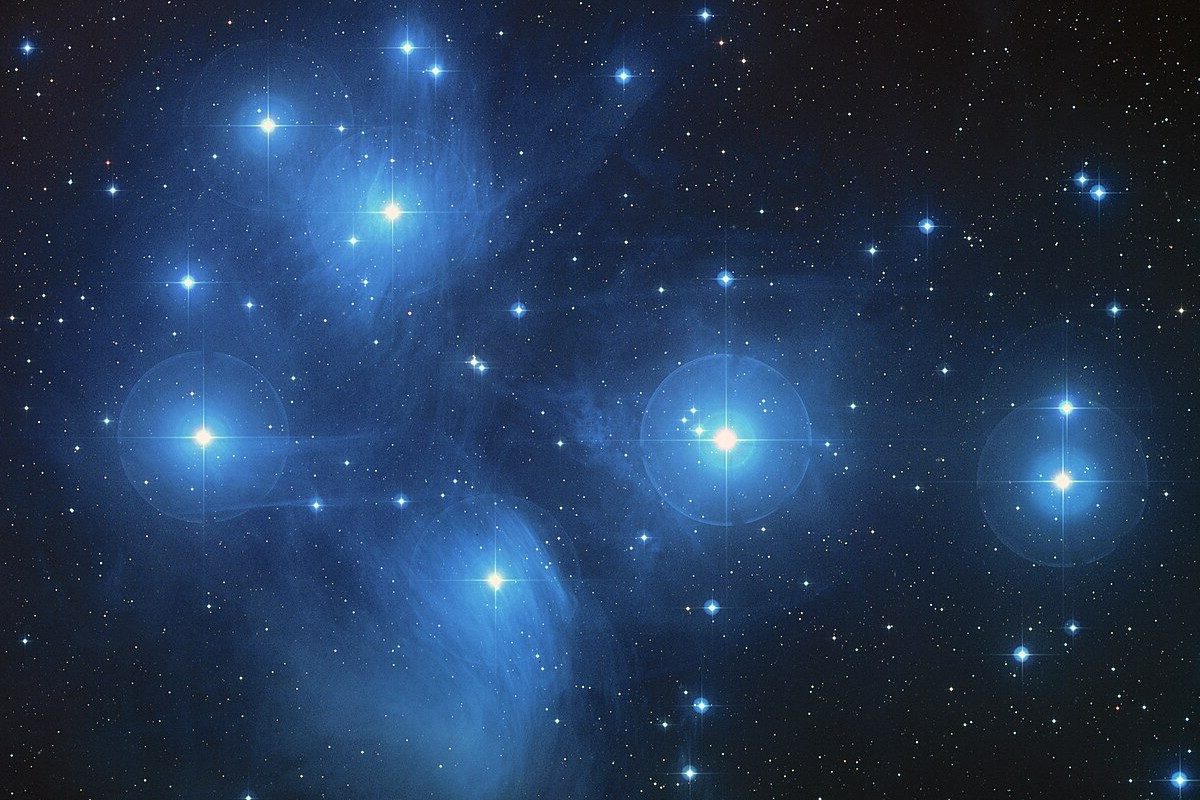
Ever gazed up at the night sky and spotted a cluster of twinkling stars? That’s likely the Pleiades, also known as the Seven Sisters. This star cluster has fascinated humans for centuries, appearing in myths, legends, and even ancient navigation techniques. But what makes the Pleiades so special? It's one of the nearest star clusters to Earth, making it easily visible to the naked eye. Located in the constellation Taurus, these stars have been studied extensively by astronomers. From their formation to their cultural significance, the Pleiades offer a treasure trove of intriguing facts. Ready to learn more? Let's dive into 27 fascinating facts about this celestial wonder!
What is the Pleiades?
The Pleiades, also known as the Seven Sisters, is a star cluster visible to the naked eye. This celestial group has fascinated humans for centuries, appearing in myths, literature, and even modern science.
- The Pleiades is located in the constellation Taurus.
- This star cluster is about 444 light-years away from Earth.
- The cluster contains over 1,000 stars, though only six to seven are visible without a telescope.
- The brightest stars in the Pleiades are named after the Seven Sisters from Greek mythology: Alcyone, Maia, Electra, Taygete, Asterope, Celaeno, and Merope.
- The Pleiades is one of the nearest star clusters to Earth, making it a popular subject for amateur astronomers.
Historical Significance of the Pleiades
Throughout history, the Pleiades has held significant cultural and mythological importance. Various civilizations have their own stories and interpretations of this star cluster.
- In Greek mythology, the Pleiades were the seven daughters of the titan Atlas and the sea-nymph Pleione.
- The ancient Egyptians associated the Pleiades with the goddess Neith.
- The Pleiades is mentioned in the Bible, specifically in the books of Job and Amos.
- Native American tribes, such as the Navajo and the Cherokee, have their own legends about the Pleiades.
- The Japanese name for the Pleiades is "Subaru," which means "unite" or "gather together."
Scientific Facts about the Pleiades
Modern science has provided us with a deeper understanding of the Pleiades, revealing fascinating details about its composition and characteristics.
- The Pleiades is an open star cluster, meaning its stars are loosely bound by gravity.
- The cluster is approximately 100 million years old.
- The stars in the Pleiades are mostly hot, blue, and young.
- The Pleiades is moving through a dusty region of space, which creates a reflection nebula around the stars.
- The total mass of the Pleiades is estimated to be around 800 solar masses.
The Pleiades in Modern Culture
The Pleiades continues to inspire and appear in various aspects of modern culture, from literature to automotive brands.
- The car manufacturer Subaru uses the Pleiades star cluster as its logo.
- The Pleiades has been referenced in works by famous authors like Tennyson and Longfellow.
- The star cluster appears in the logo of the European Space Agency.
- The Pleiades has been featured in numerous science fiction stories and movies.
- Many music artists have written songs inspired by the Pleiades.
Observing the Pleiades
For those interested in astronomy, observing the Pleiades can be a rewarding experience. Here are some tips and interesting facts about viewing this star cluster.
- The Pleiades is best viewed during the winter months in the Northern Hemisphere.
- It can be seen with the naked eye, but a pair of binoculars or a small telescope will reveal more stars and details.
- The cluster is located near the ecliptic, making it easy to find by following the line of the zodiac.
- The Pleiades rises in the east and sets in the west, similar to the Sun and Moon.
- The best time to observe the Pleiades is during a new moon when the sky is darkest.
Fun Facts about the Pleiades
Here are some additional fun and lesser-known facts about the Pleiades that might surprise you.
- The Pleiades has been used for navigation by sailors for centuries.
- Some cultures believe that the Pleiades is a portal to another dimension or a gathering place for spirits.
The Final Glimpse
Pleiades, also known as the Seven Sisters, has fascinated humans for centuries. This star cluster, located in the Taurus constellation, is visible to the naked eye and has inspired countless myths and stories. With its bright blue stars, Pleiades is a stunning sight in the night sky.
Ancient cultures, from the Greeks to the Maori, have their own tales about these stars. Modern science reveals that Pleiades is about 100 million years old and still forming new stars. It's also a key object for studying stellar evolution.
Whether you're an astronomy buff or just love stargazing, Pleiades offers a glimpse into the universe's beauty and mystery. Next time you look up at the night sky, take a moment to find these sparkling sisters and think about their rich history and scientific significance.
Was this page helpful?
Our commitment to delivering trustworthy and engaging content is at the heart of what we do. Each fact on our site is contributed by real users like you, bringing a wealth of diverse insights and information. To ensure the highest standards of accuracy and reliability, our dedicated editors meticulously review each submission. This process guarantees that the facts we share are not only fascinating but also credible. Trust in our commitment to quality and authenticity as you explore and learn with us.
